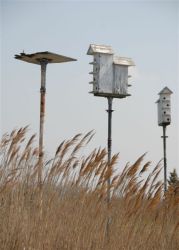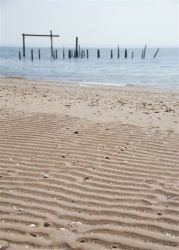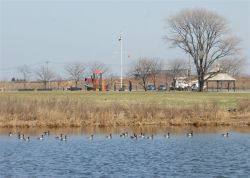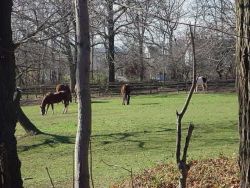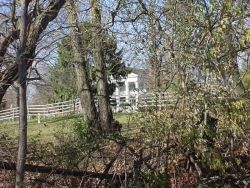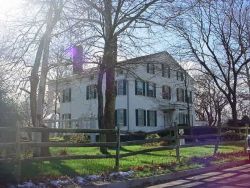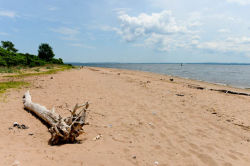Lemon Creek Park
Lemon Creek Park
Lemon Creek, which empties into Prince’s Bay, has been known by several names over the last few hundred years. In 1830, the freshwater stream was known as Seguine’s Creek, and later, as the Little North River in 1895. Shortly thereafter, the name of Lemon Creek began to appear on maps, and it has remained, although the origin of this unusual name is not known.
The Lemon Creek area is known as Prince’s Bay, which has appeared on maps and manuals in such variations as Princebay and Princess Bay. The first version of the name was made famous by the bay’s oysters, a delicacy on the menus of London and Manhattan restaurants. Several local businesses, however, and the Princess Bay Boatmen’s Association (whose clubhouses and marinas are located in the park), prefer the name ‘Princess.’ Any of the variations is undoubtedly a vast improvement on “Skunk’s Misery”, an 1857 name for the west area between Pleasant Plains and Prince’s Bay.
Lemon Creek is fed from a watershed that begins two-and-one-half miles from the creek. The main source is a small freshwater pond near Woodrow Road, known as Porzio’s Pond. The water travels over and under ground to Lemon Creek, which carries it down to Prince’s Bay, and ultimately to Raritan Bay. The red clay bluffs in the park, reaching 85 feet above Prince’s Bay at Mt. Loretto, are part of the harbor hill terminal moraine (a ridge or landform marking the farthest advance of a glacier or ice sheet). A glacier that receded approximately 15,000 years ago created these bluffs, which are the tallest ocean-facing cliffs in New York State.
This property, bounded by Hylan Boulevard and Sharrott, Bayview, and Seguine Avenues, was acquired as a park in 1962, when the City transferred 75.7 acres of land to the jurisdiction of Parks. Additional segments totaling 4.8 acres were added in 1983 and 1984. In 1989 the Seguine Mansion and its 2.1 acres site overlooking Raritan Bay was acquired through negotiations with a private owner. The house, a stately Greek Revival structure built in 1838 by Joseph H. Seguine, reflects the classical architecture and thriving commerce of mid-19th century Staten Island. An additional 22.7 acres of waterfront, acquired from the Department of Real Property, were added in 1995.
At the Princess Bay Boatmen’s Association marina, a memorial plaque on the base of the flagpole with a yardarm honors Louis Figurelli (1928-1994). Figurelli, founder of the Natural Resources Protection Association (NRPA), a group dedicated to clean waters on Staten Island, was an Association member. Figurelli spent two decades of his life protecting the beaches and marshlands of Staten Island and the waters off New York and New Jersey.
A gazebo, adorned with figures of dolphins, turtles, and egrets, offers shade and a nautical view. In the mid-1990s, Borough President Guy V. Molinari provided a total of $652,000 for shoreline stabilization and other park improvements. Molinari provided another $3,565,000 in 1999, and the City Council added $1,242,000, for further waterfront work, shoreline protection, the construction of a boat launch at Bayview Avenue, a shade pavilion, trails with interpretive signs, a footbridge, and a parking lot at Seguine and Bayview Avenues. In the year 2000, Mayor Giuiliani and Borough President Molinari provided a combined $44,200 for minor site work. Wooden benches and tables on a concrete overlook offer a picturesque view of the clay bluffs and the workboats, barges, tankers and cargo vessels churning the waters of Prince’s Bay, on their way to the Arthur Kill and Staten Island’s Howland Hook cargo terminal or beyond.
The parkland is home to swans, mallard ducks and black ducks, and it serves as a resting point for numerous migratory birds and, in early October, monarch butterflies. One of the only purple martin colonies in New York City can be found in Lemon Creek Park. These birds, which live in open woodlands, are the largest in the swallow family. The waterfront area provides a spawning ground for many species of fish and shellfish, while salt marsh plants such as goldenrod flourish nearby. Although non-commercial clamming is now prohibited for pollution reasons, the Lemon Creek fishing pier, at the foot of Sharrott Avenue, offers the opportunity to cast a line and catch flounder, striped bass, bluefish, weakfish, and others. Hand-sculpted ceramic bluefish added to the foot of the fishing pier celebrate the fishing opportunities and abundant marine life in these waters.
Check out your park's Vital Signs
Clean & Safe
Green & Resilient
Empowered & Engaged Users
Share your feedback or learn more about how this park is part of a
Vital Park System


